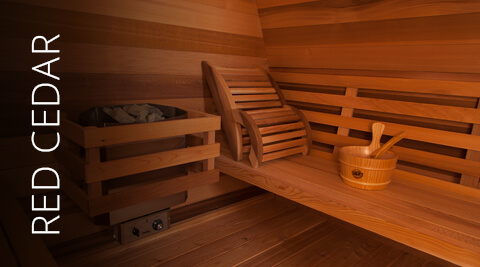7 Simple Techniques For Traditional Sauna
Table of ContentsThings about Traditional SaunaThe 15-Second Trick For Traditional SaunaMore About Traditional SaunaThe Greatest Guide To Traditional Sauna
A lot of the weight lost in a sauna is water loss and is re-gained upon rehydrating. Without a question sauna can be an important part of a healthy and balanced weight loss program. To take a look at the differences between conventional and IR saunas, I will certainly divide these into verifiable, theoretical, and made differences.Thus, the best factor in the saunawhich is at the ceiling directly over the sauna heateris typically between 185 and 190 F. Traditional Sauna. Claims that a standard sauna goes beyond 200 F is merely not real and not applicable for electrical saunas marketed in the US. The temperature level for a far-infrared sauna is typically set between 120 and 140 F; however, unlike the conventional sauna, the objective in and IR space is not to attain a high temperature level
As a result of this, the temperature level distinction is nearly irrelevant, since extreme sweating causes both sauna kinds, yet the method of heating up the body is various. In an IR sauna the bather will really feel hot and will certainly sweat a lot, but at a lot lower temperature levels. Hence, if the objective is to invest longer time periods in the sauna, the IR sauna is an excellent choice.

Some Known Details About Traditional Sauna
When the heat is attained, the aspects cycle on and off to maintain the heat. The majority of standard sauna individuals take pleasure in pouring water over the rocks to create heavy steam to increase sauna humidity levels. The benefits of pouring water over the rocks consist of: making the space more comfy, moistening the nasal flows, and allowing the use of aromatherapy by mixing essential oils with the water.
In a far-infrared sauna, the warm front pass through the body to efficiently heat up the body and increase the body core temperature. To achieve this enhanced temperature, Far-infrared emitters create infrared energy which is close to the same wavelength as that which the body normally emitsoften referred to as the "Essential Variety" of 7 to 14 microns), so the energy is well gotten by the body.
When the energy enters the body, it causes the body temperature to raise and inevitably causes perspiration. In an infrared sauna it's important for the emitters/heaters to remain on almost continuously. Because there is no mass of rocks to retain heat, the sauna will cool down if the emitters shut off.
As stated over, the sauna bather in an infrared space desires to place himself before running emitters to obtain optimal gain from the warmth. The home heating time for both spaces can be extremely various, depending on exactly how the areas are made use of. For a conventional sauna, a bather must allow 30-40 minutes for the space to accomplish a desired temperature level and to appropriately pre-heat the rocks.
The Of Traditional Sauna
A well built sauna will normally accomplish a temperature of 150-160 F in concerning 30-40 minutes. For hotter temperatures, the room might require to warm try here for a longer period.
To some, 15 minutes was "wasted" while the infrared energy heated the wood panels rather than heating up a body, while others locate a pre-heated area to be much more comfy and think an elevated beginning temperature level is needed to begin sweating. The size of suggested use for each area is approximately the very same (10-15 minutes per session); however, because of the lower air temperature levels and the capability to really feel the effects of over at this website infrared warmth quicker than a typical sauna, it is not unusual for a person to invest a total amount of 20-30 mins in an infrared sauna.
Typical saunas often tend to be larger (hence make use of more electrical power) than infrared saunas, although standard saunas are certainly available in one and 2 individual sizes as well. For a two-person conventional sauna, 5x6 or 5x7 size is most preferred. The leading bench can conveniently seat 2 or 3 individuals and is also long sufficient to rest throughout the sauna session.


The average cost per kWH of power in the united state is roughly $0.11, so a 4.5 kW heating unit will certainly cost around $.50 to run for one hour, if the heater runs continually for one hour. Typically a sauna heating unit will certainly compete 75% of the first hour and 50% of subsequent hours on considering that the components cycle once the set temperature is accomplished.
Unknown Facts About Traditional Sauna
A two person far-infrared space is usually physically smaller than a standard sauna, often regarding 4' x 4' or smaller. The IR heating unit is usually 1.5-1.7 kW using a 120 volt 15 amp plug-in service. Since the room can be used faster than a sauna room, we will presume the room is used for to of an hour consisting of heat up click time.
There is a rarely reviewed difference in the social experience in between the 2 areas. While our culture has actually lost several of the social benefit of the typical sauna experience, it can be very socially rewarding. From family members time in the sauna, to heart-felt conversations with loved ones, to sauna partiesthe conventional sauna experience can bring about intimate mingling.
Most greater end infrared spaces include tinted light treatment, sound systems and full-glass fronts.